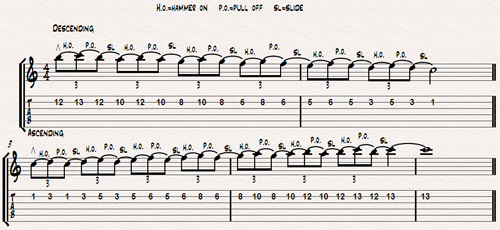In this lesson I go through all inversions for the most popular major triad ‘shapes’ on guitar.
The theory behind triads is quite simple: a major triad is basically the 1st, 3rd and 5th note of a major scale. If analysed in intervals: from the root I will have a first note that is a major 3rd apart and a second note that is a perfect 5th apart. As an example, for the key of C major (C,D,E,F,G,A,B) my C major triad will be C,E,G (C-E major 3rd, C-G perfect 5th).
If these notes (or ‘voices’) are contained within an octave we call this ‘close’ or ‘closed’ position, as opposite as ‘spread’ position (more than an octave). We will see the triads in Spread Position in another lesson.
INVERSIONS
When the triad is in its Root-3rd-5th configuration we call it ‘root position’ – C,E,G
If we move the root up an octave we have the first inversion – 3rd, 5th, Root – E,G,C
If we then move the 3rd up an octave we have the second inversion – 5th, Root, 3rd – G,C,E
OTHER TRIADS
It is really simple to find other (minor, augmented, diminished) triads from the major triad.
Major triad – R,3,5 – C,E,G
Minor triad – R,m3,5 – C,Eb,G (Lower the 3rd one 1/2 step)
Augmented triad – R, 3, #5 – C,E,G# (Raise the 5th one 1/2 step)
Diminished triad – R,m3,dim5 – C,Eb,Gb (Lower both the 3rd and 5th one 1/2 step)
Download –here– the page with all the inversions on a printable PDF file or click the image below.




